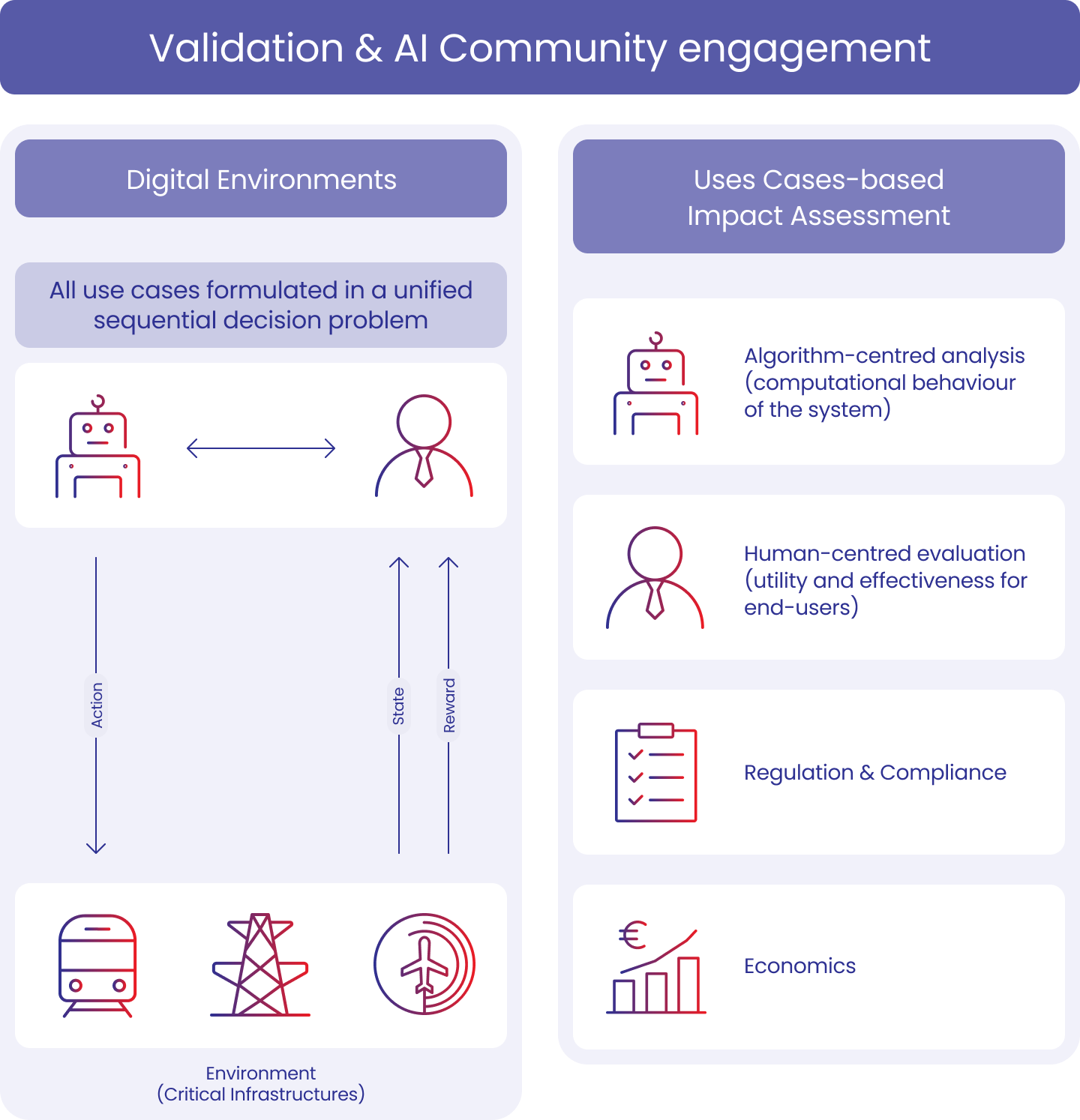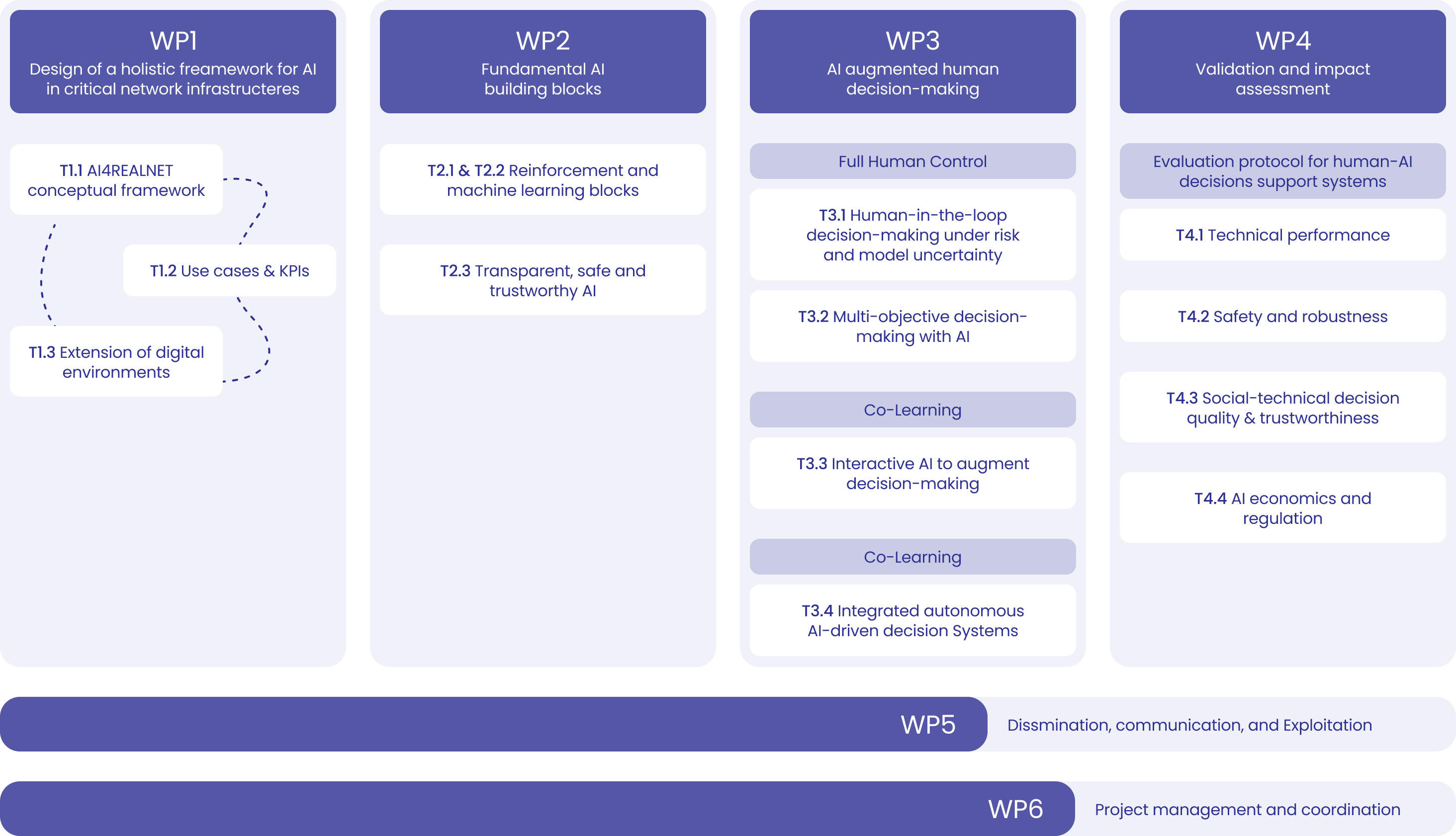
The Project
The scope of AI4REALNET covers the perspective of AI-based solutions addressing critical systems (electricity, railway, and air traffic management) modelled by networks that can be simulated, and are traditionally operated by humans, and where AI systems complement and augment human abilities.
Our core elements are:
1
AI algorithms mainly composed by supervised and reinforcement learning.
Unifying the benefits of existing heuristics, physical modelling of these complex systems and learning methods, as well as a set of complementary techniques to enhance transparency, safety, explainability and human acceptance.
2
Human-in-the-loop decision making for co-learning between AI and humans.
Considering integration of model uncertainty, human cognitive load and trust.
3
Autonomous AI systems relying on human supervision.
Embedded with human domain knowledge and Safety rules.
Use Cases
The AI4REALNET framework will be validated in 6 uses cases driven by industry requirements, across 3 network infrastructures with common properties. The use cases are focused on critical challenges and tasks of network operators, considering strategic long-term goals, such as decarbonisation, digitalisation, and resilience to disturbances, and are formulated in a unified sequential decision problem where many AI and non-AI algorithms can be applied and benchmarked.
Main Strategic Goals
Specific Objectives
1
Design and develop a domain-general AI framework within the formalism of sequential decision-making.
2
Novel variants of SL/RL for large-scale complex networks functions and HMI for explainable, algorithmically transparent, and interpretable RL
3
Develop human-assistance and co-learning strategies under risk and uncertainty.
4
Develop autonomous AI agents with safety and robustness.
5
Validate in a variety of use cases and digital environments, increase social, academic, and business awareness of AI potential.
Concept


Expected Outcomes & Impacts
1
Journal and Conference publications / open-source software
2
New RL/SL algorithms
3
Improvements in the digital environments (up to TRL5)
4
XAI/HMI solutions to increase trustworthiness
5
Cost and benefits quantification for industry-driven use cases
6
Validated AI-human interactions (design, training, deployment)
7
AI ecosystem (academia, start-ups, SMEs) around the digital environments
8
Recommendations for policymakers in critical infrastructures and AI
Workpackage Structure

